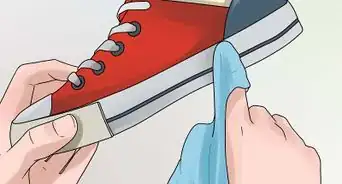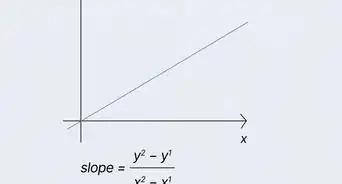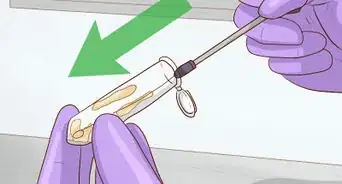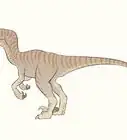This article was co-authored by wikiHow Staff. Our trained team of editors and researchers validate articles for accuracy and comprehensiveness. wikiHow's Content Management Team carefully monitors the work from our editorial staff to ensure that each article is backed by trusted research and meets our high quality standards.
There are 12 references cited in this article, which can be found at the bottom of the page.
This article has been viewed 40,185 times.
Learn more...
If dinosaurs have captured your imagination and you want to learn more about them, you’re in luck. Reading books, watching documentaries, visiting museums, and joining fossil clubs are just a few ways of building your knowledge. Learn about the different types of dinosaurs, how they lived, and how scientists study them. To dig even deeper, study field techniques, learn how to identify and collect fossils, and become a paleontologist, or a scientist who studies the history of life on Earth.
Steps
Learning Basic Dinosaur Facts
-
1Find out what makes dinosaurs different from other reptiles. Look for books and documentaries about dinosaur anatomy to learn more about the physical traits that made them unique. Reconstructed skeletons, models, and even toys can also help you see how dinosaurs were different from other reptiles. What set dinosaurs apart were their hips, which allowed them to stand upright with their legs directly under their bodies.[1]
- Even dinosaurs that walked on all fours stood with their legs directly under their bodies. This upward stance allowed dinosaurs to move faster and with more endurance than other reptiles.
- Other prehistoric reptiles, such as the flying pterosaurs and aquatic plesiosaurs, didn’t have this feature, so they weren't dinosaurs.
-
2Study the various types of dinosaurs. To learn more about different dinosaur families, look for a dinosaur encyclopedia at the library or bookstore. You can also search online for “types of dinosaurs” or “dinosaur orders and suborders.” You might recognize well-known families such as long-necked or plated dinosaurs; each group has a special scientific name:
- Sauropodomorpha (sawr-oh-POH-dah-more-fah), or sauropods, walked on all fours, had long necks and tails, and were the largest animals to ever walk on land.
- Thyreophora (thye-ree-OFF-or-ah), were armored dinosaurs that walked on 4 legs. This group includes Ankylosauria (ang-kye-luh-SAWR-ih-ah), or the tank-like, club-tailed dinosaurs, and Stegosauria (steg-oh-SAWR-ih-ah), or the well-known spike-tailed, plated dinosaurs.
- Ceratopsia (sair-uh-TOP-see-ah), or ceratopsians, walked on all fours and had horns, ridges, and bony frills sprouting from their heads and faces.
- Pachycephalosauria (pak-ee-sef-uh-lo-SAWR-ee-uh), or pachycephalosaurs, were herbivores, walked on 2 legs, and had thick, helmet-like skulls. Some dinosaurs in this group had skulls 9 in (23 cm) thick!
- Ornithopoda (or-nith-uh-PODE-ah), or ornithopods, were beaked herbivores that mainly walked and ran on 2 feet. They’re commonly known as duck-billed dinosaurs.
- Theropoda (thair-uh-PODE-ah), or therapods, walked on 2 legs and were carnivores. This group includes numerous families, from the massive Tyrannosaurus to avian dinosaurs, or the ancestors of modern birds.
Advertisement -
3Memorize the names of dinosaurs from each group. There are over 700 different kinds of dinosaurs, and it’s tough to remember them all. Look up species in a dinosaur encyclopedia and make flashcards to memorize as many as you can. Write the name of a dinosaur on one side then, on the back, write its type, whether it ate meat or plants, and when it lived.[2]
- Dinosaurs often get their names from Latin or Greek words, and it’s helpful to include each name’s meaning on your flashcard. The word dinosaur, for example, comes from the Ancient Greek words deinos, or “terrible,” and sauros, or “lizard.”[3]
- To make a flashcard, write “Triceratops” on one side, then write “Ceratopsia, herbivore, late Cretaceous period, ‘Three-horned face.’ on the other.” You could also draw or print out a picture of each dinosaur and paste it on the side with its name.
- In addition to well-known dinosaurs such as Tyrannosaurus Rex, Triceratops, and Stegosaurus, try to memorize lesser-known species. Examples include the sauropod Mamenchisaurus (mah-MEN-chi-SAWR-us), the ceratopsian Styracosaurus (stih-RAK-uh-SAWR-us), and the carnivorous Carcharodontosaurus (kar-kar-o-DON-tuh-SAWR-us).
-
4Build your understanding of the geologic time scale. Head to your local library and check out a book about geologic time; a geology textbook would be a great source. You may have already heard the term Jurassic, which is a geologic period of time. It was part of the Mesozoic Era, or the span of time during which dinosaurs roamed the Earth.[4]
- The Mesozoic Era lasted from 252 to 66 million years ago, or for about 186 million years. In contrast, Homo sapiens, or modern humans, have only been around for about 300,000 years![5]
- The Mesozoic Era is divided into 3 periods: the Triassic, the Jurassic, and the Cretaceous. All non-avian (non-bird) dinosaurs went extinct at the end of the Cretaceous about 66 million years ago.
- Modern birds are the descendants of avian dinosaurs, so it’s fair to say that some dinosaurs still walk the Earth!
-
5Learn how paleontologists study dinosaurs. Fossilized skeletons, footprints, nest sites, and skin imprints help paleontologists understand what dinosaurs looked like and how they lived. Read books and watch documentaries about fossils to learn how they're formed. Additionally, look for memoirs, diaries, and blogs by paleontologists to better understand the work they do.[6]
- Check out blog posts and podcasts about fieldwork created by reputable paleontologists at http://www.pasttime.org.
- Fossils form when bones, shells, and other organic materials gradually decay and form a mold. Over time, minerals fill this mold, replace the organic material, and form rocks in the shape of the bone or shell. This process is called fossilization.
- Fossils tell us all about the anatomy of dinosaurs and other prehistoric animals. They also help paleontologists understand dinosaur behavior. For example, by examining fossilized footprints, paleontologists can infer how dinosaurs moved, determine whether they lived in groups, and figure out how different species interacted.[7]
Digging Deeper with Educational Resources
-
1Watch recent dinosaur documentaries. Find documentaries on streaming services, educational television channels, and museum websites. You could also check your local library for documentaries on DVD. For the most up to date information, go for documentaries that are no more than 4 or 5 years old.[8]
- The American Museum of Natural History is packed with educational resources. Find videos, articles, and more at https://www.amnh.org/dinosaurs.
- A documentary from 1995 or 2000 collecting dust on your library’s shelves might be fun to watch, but paleontologists have made significant dinosaur discoveries since then. If you do come across an old documentary, draw contrasts between what we knew then and our knowledge of dinosaurs today.
-
2Read scientific books about dinosaurs. If you want more detailed information about dinosaurs, head to the library or purchase your own copies of scientific books. There are tons of excellent, informative books and encyclopedias for readers of all ages. A few good choices include:[9]
- Dinosaurs: The Most Complete, Up-to-Date Encyclopedia for Dinosaur Lovers of All Ages by Dr. Thomas R. Holtz, Jr. is a great source for kids and adults alike.
- Digging Dinosaurs: The Search That Unraveled the Mystery of Baby Dinosaurs by John R. “Jack” Horner is the memoir of one the most widely respected paleontologists. Horner is famous for discovering that many dinosaurs nested and cared for their young.
- The Dinosauria, edited by David Weishampel, Peter Dodson, and Halszka Osmólska, is an authoritative reference text and a must-have if you’re serious about your dino-studies.
-
3Keep up with dinosaur discoveries. New species are frequently unearthed, and technological leaps yield more and more information about fossils. Stay up to date with dinosaur news, from research into biomechanics, or how dinos moved, to the latest discoveries that link avian dinosaurs to modern birds.[10]
- See the American Museum of Natural History’s dinosaur discoveries page at https://www.amnh.org/explore/science-topics/dinosaur-discoveries.
-
4Visit natural history museums with dinosaur exhibits. Seeing a reconstructed dinosaur skeleton is a breathtaking moment for any dino lover. Search online for “dinosaur museum exhibitions” or “natural history museum” near your location. Check to see if exhibitions are permanent or temporary, and if tickets should be purchased ahead of time.[11]
- For major natural history museums, try to buy passes in advance to avoid long lines. If you’re a student, ask your parents to take you, or talk to your science teacher about a school field trip.
- If you can’t get to a major museum in person, you can still find a treasure trove of information on museum websites.
-
5Take a trip to a fossil park. Digging for your own fossils can give you a sense of what it’s like to be a paleontologist. Fossil parks are locations where fossils are frequently found; look online for one in your area. At many sites, you can dig up and bring home the specimens you find.
- Removing fossils from the site isn’t allowed at some fossil parks. Be sure to check the rules before bringing anything home. It’s illegal, for example, to remove a fossil from a U.S. National Park Service site.
- In the United States, find the nearest fossil park at https://www.myfossil.org/fossil-parks.
Becoming a Paleontologist
-
1Join a fossil club or paleontology organization. A local fossil club or national paleontology organization, which you can search for online, can put you in touch with other dino buffs. Through your club or organization, you can find classes, conferences, and workshops on paleontological fieldwork.[12]
- Unlike most other scientific disciplines, amateur paleontologists make major contributions to the field. Jack Horner, for example, never earned a degree in paleontology. If you learn how to identify and collect fossils, you might end up discovering a new species of dinosaur![13]
-
2Volunteer at a museum to gain firsthand knowledge. Sign up to be a tour guide or docent, and get to know the paleontologists on the museum’s staff. Pick their brains about the field, ask them how they became professional paleontologists, and get tips on finding and digging up fossils.[14]
- Volunteering is a great way to get free access to a museum’s resources. Try not to be shy about approaching a museum professional. They’re passionate about their field, and they’ll most likely be eager to share their knowledge with you.
-
3Ask an experienced paleontologist to be your mentor. Attending workshops and joining a club or organization can put you in touch with more experienced paleontologists. Try asking one if you can join them on a dig or if they could help you learn more about collecting fossils. Your fossil club might also organize digs lead by an experienced paleontologist.[15]
- For example, suppose you join a fossil club and attend a workshop on proper excavation techniques. Chat with the workshop leader afterward, and ask questions about their lesson.
- Reaching out to a potential mentor can be intimidating, but do your best not to be shy. Just relax and express your interest in learning more about paleontology. They'll probably be excited to share their knowledge with you!
- If you pursue a degree in paleontology, you'll choose a professor to be your mentor and thesis adviser.
-
4Get a degree in paleontology if you want to be a professional. While you don’t need a degree to be an amateur paleontologist, you’ll need one if you want to gain employment. Professional field paleontologists and those that work in museums usually have to have a master’s degree. A doctorate is usually required for academic paleontologists.[16]
- You don’t necessarily need a bachelor’s degree in paleontology, which isn’t a common undergraduate degree program. You could earn your degree in archaeology, geology or biology, then apply to graduate programs in paleontology or paleobiology.[17]
Community Q&A
-
QuestionWhat is genetic sequencing?
 Community AnswerGenetic or DNA sequencing is the process of determining the precise order of nucleotide within a DNA molecule. It includes any method or technology that is used to determine the order of the four bases, adenine, guanine, cytosine, and thymine, in a strand of DNA.
Community AnswerGenetic or DNA sequencing is the process of determining the precise order of nucleotide within a DNA molecule. It includes any method or technology that is used to determine the order of the four bases, adenine, guanine, cytosine, and thymine, in a strand of DNA. -
QuestionHow can someone become an expert on dinosaurs if there are no dinosaurs to know what they looked like?
 Community AnswerThere are many dinosaur bones and remains that have been dug up by archaeologists and reconstructed, and advanced science and technology enables scientists to figure out how the dinosaurs looked and lived based on their remains, locations, and other clues.
Community AnswerThere are many dinosaur bones and remains that have been dug up by archaeologists and reconstructed, and advanced science and technology enables scientists to figure out how the dinosaurs looked and lived based on their remains, locations, and other clues. -
QuestionHow can I tell if a fossil is fake?
 Community AnswerMost true fossils do not look like museum skeletons, as the skeletons are usually a sort of plaster.
Community AnswerMost true fossils do not look like museum skeletons, as the skeletons are usually a sort of plaster.
References
- ↑ https://www.khanacademy.org/partner-content/amnh/dinosaurs/what-is-a-dinosaur/a/what-makes-a-dinosaur-a-dinosaur
- ↑ https://www.amnh.org/dinosaurs/types-of-dinosaurs
- ↑ https://www.amnh.org/learn-teach/curriculum-collections/dinosaurs-activities-and-lesson-plans/dinosaur-names-activity
- ↑ https://www.amnh.org/learn-teach/curriculum-collections/dinosaurs-activities-and-lesson-plans/understanding-geologic-time
- ↑ http://humanorigins.si.edu/evidence/human-fossils/species/homo-sapiens
- ↑ https://www.amnh.org/dinosaurs/dinosaur-facts
- ↑ https://cosi.org/downloads/DinoGallery_EduGuide.pdf
- ↑ http://larryferlazzo.edublogs.org/2010/09/25/the-best-sites-for-learning-about-dinosaurs/
- ↑ https://www.nationalgeographic.com/science/phenomena/2015/06/10/a-dinosaur-reading-list-for-everyone/
- ↑ https://cosi.org/downloads/DinoGallery_EduGuide.pdf
- ↑ https://cosi.org/downloads/DinoGallery_EduGuide.pdf
- ↑ http://www.ucmp.berkeley.edu/faq.php#training
- ↑ https://www.smithsonianmag.com/science-nature/so-you-want-to-be-a-paleontologist-43495392/
- ↑ http://www.priweb.org/index.php/education/education-projects-programs/public-education-programs/i-want-to-be-a-paleontologist
- ↑ http://www.priweb.org/index.php/education/education-projects-programs/public-education-programs/i-want-to-be-a-paleontologist
- ↑ https://www.smithsonianmag.com/science-nature/so-you-want-to-be-a-paleontologist-43495392/
- ↑ http://www.ucmp.berkeley.edu/faq.php#training







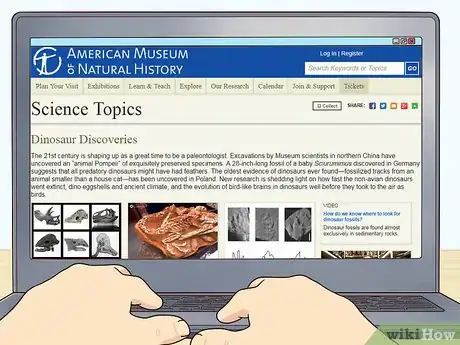





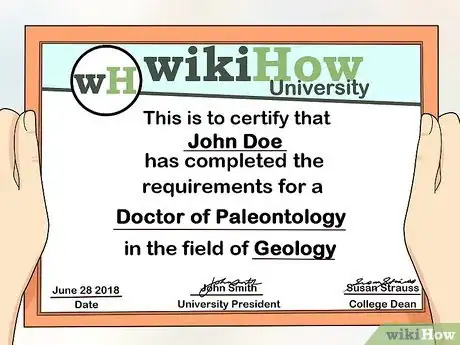
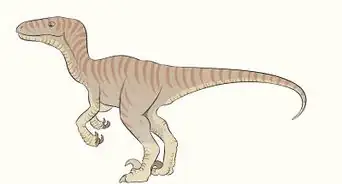


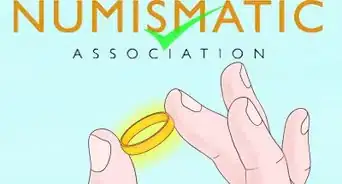
-Electric-Shock-Step-9.webp)

